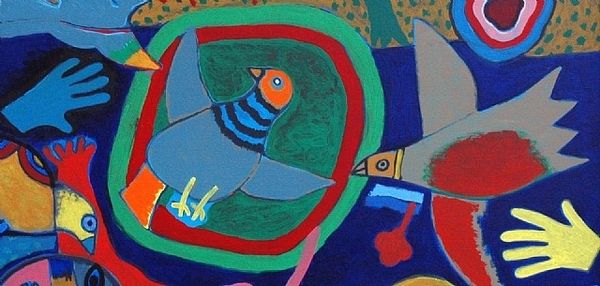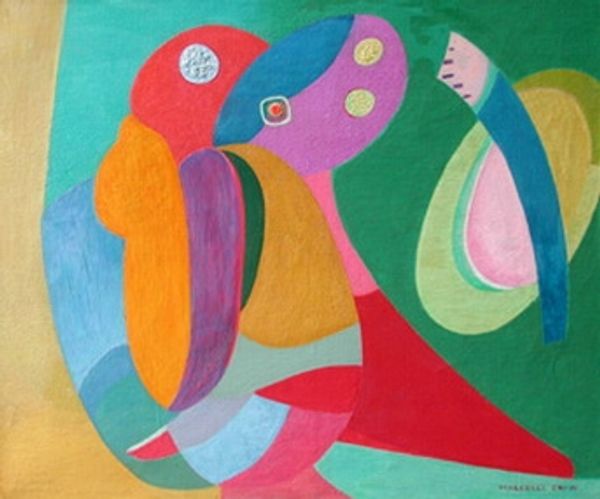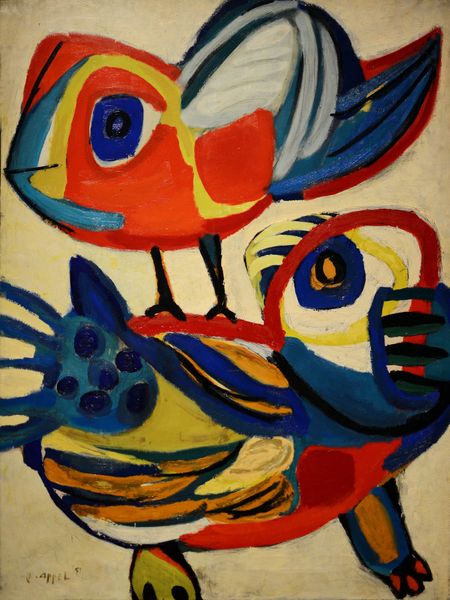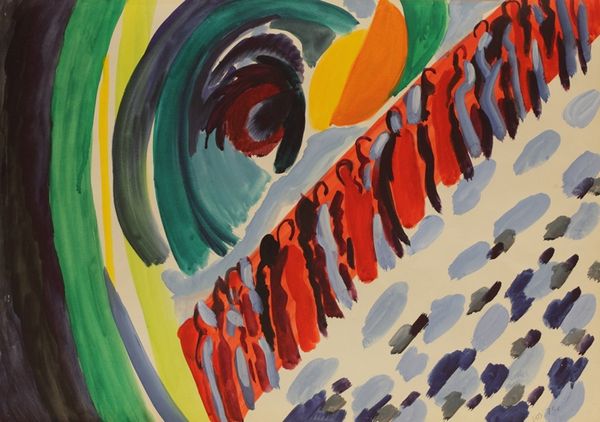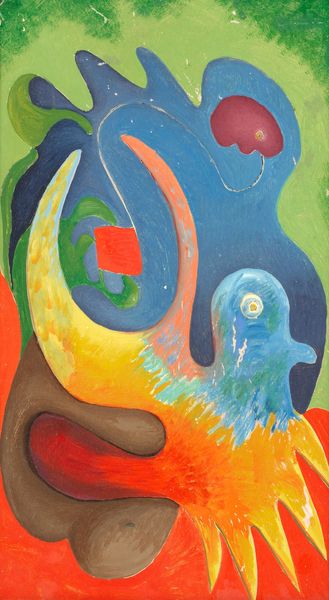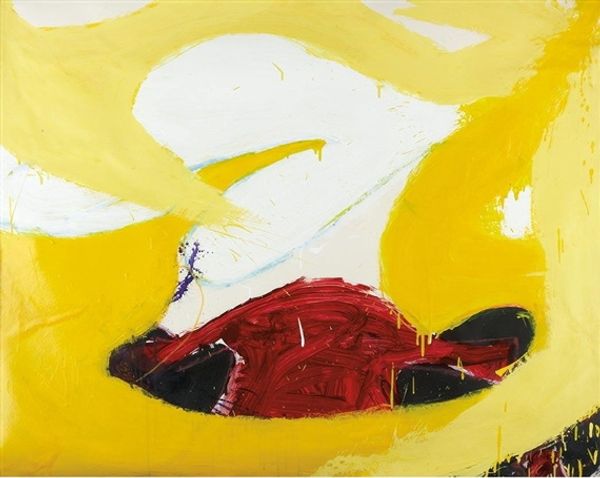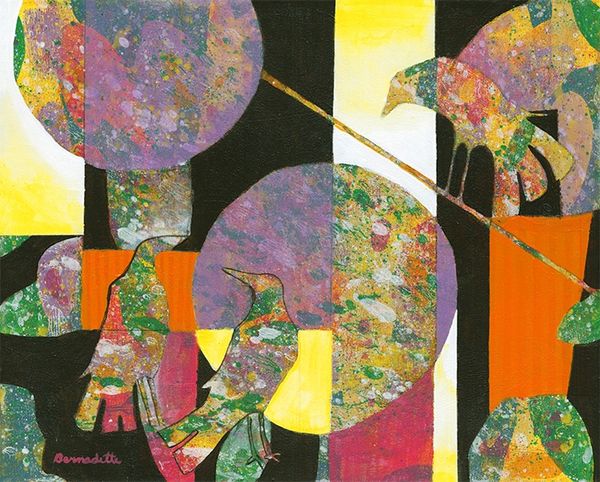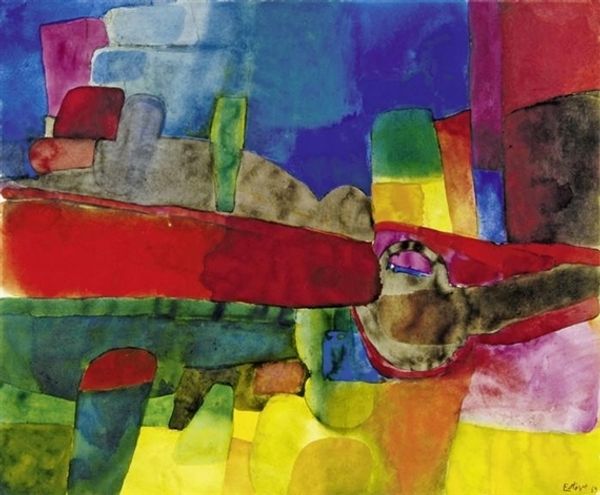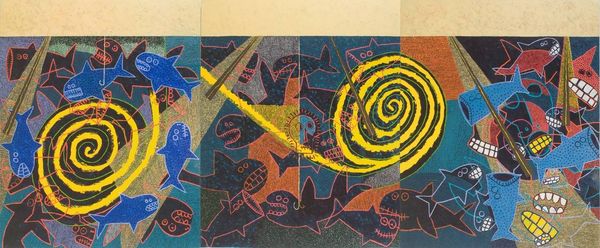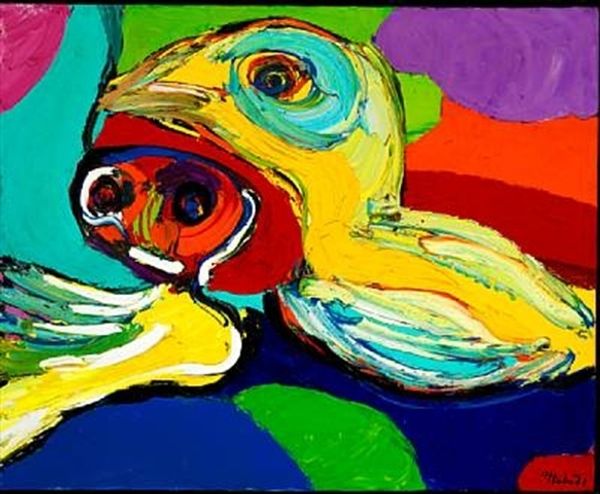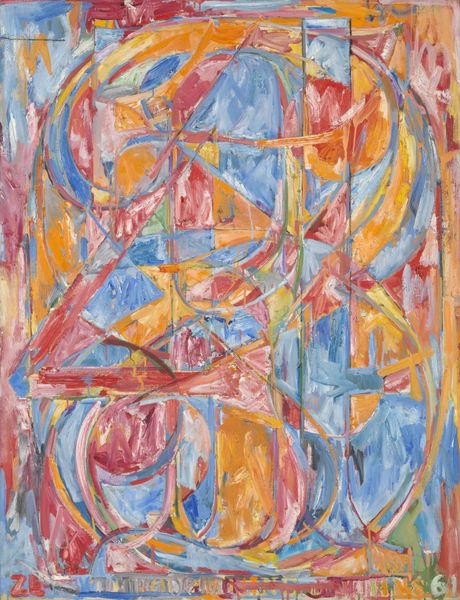
Copyright: Public domain Japan
Editor: This is Yasuo Kuniyoshi's "Fish Kite" from 1950, painted with oils. I'm immediately struck by its vibrant colors, almost Fauvist in style. There's a definite sense of playful energy but also…something slightly unsettling. What do you see in this piece? Curator: I see Kuniyoshi engaging with a complex set of socio-political narratives. Remember, he was a Japanese-born artist living in the US during World War II. The “enemy alien” label significantly impacted his public role as an artist. This "Fish Kite" was painted during the Cold War; perhaps he used this seemingly innocuous subject to process his personal anxieties. Editor: Anxieties? The fish looks celebratory! Curator: Consider the historical context. Kites are celebratory but notice the figures beneath the kite appear burdened. And that symbol in the background resembles the Lorraine cross…used by the Free French Forces and later appropriated by some anti-Semitic groups in France. The bold color choices typical of Expressionism may not suggest celebration here, but rather a loud cry for freedom during a suppressive period. What do you think he’s saying about belonging, or not belonging, through this imagery? Editor: So the vibrant colors and playful subject matter act as a kind of mask, hiding deeper, more politically charged anxieties about identity and acceptance. Is that a common approach for artists working during times of conflict? Curator: Absolutely. Think of many post-impressionists, who created beauty as resistance. How can art act as a subversive voice within popular culture and even within institutions like galleries and museums? Editor: I hadn't considered it in that light. I was focused on the aesthetic qualities, but it’s fascinating to see how historical context reshapes my interpretation. Curator: Precisely. We shouldn’t just passively consume art, but actively question the socio-political structures that influenced it and continue to shape its reception. Editor: This has really broadened my perspective. I’ll definitely approach artworks with more of a historical and cultural lens from now on.
Comments
No comments
Be the first to comment and join the conversation on the ultimate creative platform.
